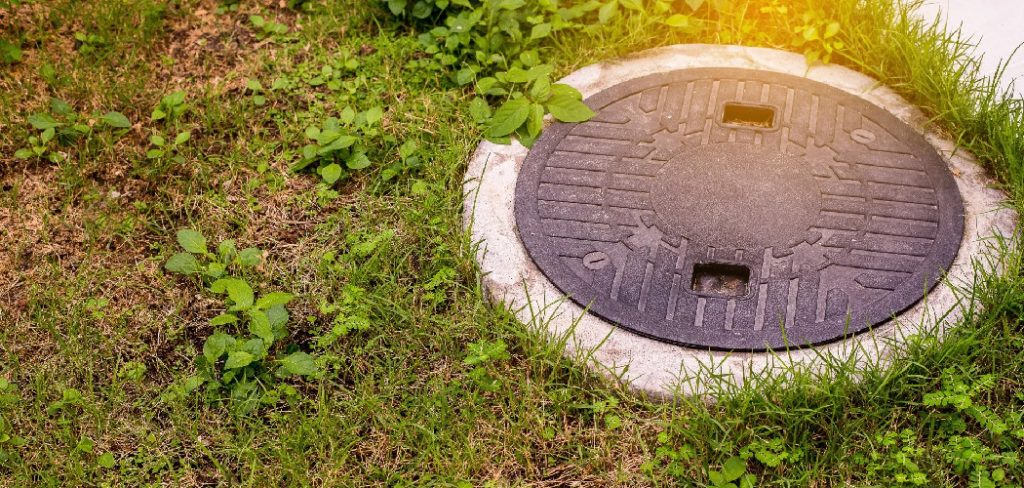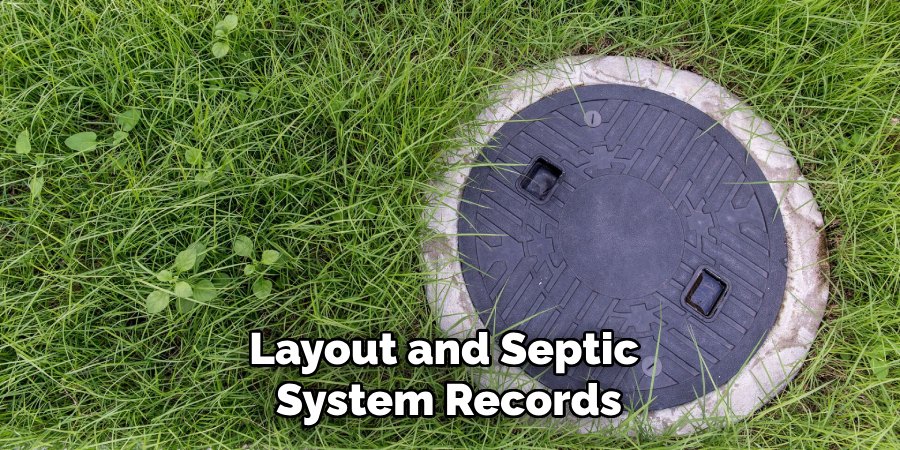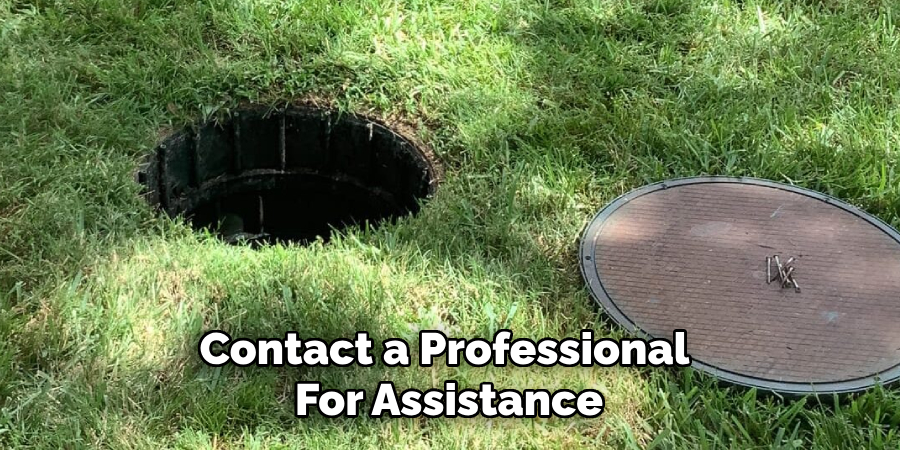Locating the septic tank cover on your property is an essential task for routine maintenance and inspections. The septic tank cover provides access to the tank for pumping, repairs, and ensuring the system functions properly. Without regular upkeep, septic systems can develop problems that are costly and inconvenient to resolve.

This guide on how to locate septic tank cover will help you understand the basics of identifying and locating your septic tank cover, ensuring you can easily maintain your system and prevent potential issues.
Why is It Important to Locate Your Septic Tank Cover?
It is crucial to locate your septic tank cover for several reasons. The most obvious reason is for maintenance purposes. Regularly accessing the septic tank allows for pumping and inspecting the system, ensuring it functions properly and efficiently.
Another significant reason is in case of emergencies or repairs. If there is a major issue with your septic system, such as a backup or leak, you will need quick and easy access to the tank’s interior. Knowing where the septic tank cover is located can save time and money during these unforeseen situations. If you’re looking to improve your yard’s appearance, there are plenty of creative septic tank cover ideas that blend functionality with landscape design.
Safety Precautions
Before attempting to locate and access your septic tank cover, it is crucial to follow proper safety precautions to avoid injury and potential system damage. Always wear protective gloves and sturdy footwear when working near a septic system, as the area may be slippery or contain sharp objects.

Use tools designed for digging carefully to avoid damaging underground piping or components. If you smell strong odors or suspect a leak, keep a safe distance and contact a professional immediately, as exposure to septic gases can be harmful. Never enter the septic tank for any reason, as the confined space can pose serious health and safety risks. Prioritizing safety ensures that you can maintain your septic system without unnecessary hazards.
Tools and Materials You May Need
- Shovels or Spades for Digging
- Rakes for Clearing Debris
- Garden Hose for Cleaning the Tank and Components
- Septic-safe Cleaning Products (if Needed)
- Rubber Gloves and Protective Eyewear for Handling Potentially Hazardous Materials
- Access Risers, if Not Already Installed, to Make Accessing the Tank Easier in Future Maintenance
- Personal Protective Equipment (PPE) such as Face Masks or Respirators, if needed
- Tank Pumping Hose and Truck for Removing Septic Waste
- Replacement Septic Tank Parts, if Necessary
5 Simple Steps on How to Locate Septic Tank Cover
Step 1: Know Your Property
Start by familiarizing yourself with your property’s layout and septic system records. Most homeowners should have documentation, such as a property survey, site plan, or septic system diagram, that indicates where the septic tank is located. If these records are unavailable, identify areas of the yard where the grass may be greener or grows quicker, as this can indicate the presence of underground septic components.

Additionally, septic tanks are often located between the house and the drainage field, typically not far from the home. Take note of any septic access risers or clean-out ports visible above ground, as these can provide helpful clues.
Step 2: Check for Paperwork
Start by reviewing any documentation that might provide details about the septic system. This could include property inspection reports, permits, or maintenance records. If you recently purchased the home, check the documents provided during the sale, as they often include information about the location and specifications of the septic system.
If you cannot locate these documents, consider reaching out to your local health department or municipal office, as they may have records on file for your property. Having accurate paperwork can save time and provide key details needed to properly locate and assess your septic tank.
Step 3: Look for Visual Clues
One of the easiest ways to locate your septic tank cover is to look for visual clues in your yard. Keep an eye out for a slight depression in the ground, usually about 6-12 inches deep and approximately the size of your septic tank.
You may also notice patches of grass that are greener or more lush than other areas, which could indicate where the main sewer line is located.

Step 4: Use a Metal Detector
If you’re having trouble finding any visual clues, consider using a metal detector to help pinpoint the location of your septic tank cover.
Make sure to use one that is specifically designed for locating buried pipes or tanks. Once you have found the cover, make a note of its exact location for future reference.
Step 5: Contact a Professional
If all else fails, it may be best to contact a professional for assistance. They will have the tools and knowledge necessary to accurately locate your septic tank cover. Additionally, they can also provide guidance on proper maintenance and care for your septic system.
Following these steps on how to locate septic tank cover can help save time and frustration. It is important to regularly inspect and maintain your septic system to avoid any potential problems in the future. By taking proper care of your septic tank cover, you can ensure its

Additional Tips
- Regularly inspect and maintain your septic tank cover to prevent any issues from arising.
- Keep records of any repairs or maintenance done on your septic system.
- Avoid planting trees or large shrubs near your septic tank as their roots can damage the tank and its pipes.
- Be mindful of what you flush down the toilet or drain to avoid clogs and other problems with your septic system. This includes avoiding flushing non-biodegradable items, grease, and harsh chemicals.
- Consider installing a riser to make it easier to access your septic tank cover for regular maintenance and inspections.
- Educate yourself on the signs of septic system failure so you can address any issues promptly.
- When hiring a professional for septic system maintenance or repairs, always choose a licensed and reputable company with experience in handling septic systems.
- Remember that proper maintenance of your septic tank cover is not only important for the functionality of your home’s plumbing system but also for protecting the environment.
- Make sure to dispose of all household waste properly and avoid putting any harmful chemicals or materials down your drains.
- Regularly check and clean the aerator on your septic tank, as it plays a crucial role in breaking down solids and promoting proper drainage.
- Consider implementing water conservation measures to reduce the strain on your septic system, such as installing low-flow fixtures and repairing any leaks.
When to Call a Professional?
There are certain situations when it’s essential to call a professional to inspect or service your septic system. If you notice slow drains, foul odors, or pooling water near your septic tank, these could be signs of a problem that requires immediate attention. Additionally, if it has been several years since your last septic inspection or pumping, scheduling a routine check-up is highly recommended.
Attempting to fix complex issues on your own can lead to further damage or safety risks, so always rely on a licensed professional with the expertise to assess and resolve septic system problems efficiently. Regular professional maintenance can help extend the life of your system and prevent costly repairs down the line.
Frequently Asked Questions
Q1: How Often Should a Septic Tank Be Pumped?
A: On average, a septic tank should be pumped every 3-5 years. However, the frequency may vary depending on factors such as household size, water usage, and the size of the septic tank. Consult with a professional to determine the best pumping schedule for your specific system.
Q2: Can I Use Additives to Help Maintain my Septic System?
A: It is not recommended to use additives in your septic system as they can disrupt the natural balance of bacteria and enzymes needed to break down waste. In fact, some additives may even cause harm by causing clogs or damaging pipes.
Q3: How Can I Tell If My Septic System Needs Repair?
A: Some signs that indicate your septic system may need repair include slow-draining toilets and sinks, foul odors in the yard or home, and sewage backups. It is important to address these issues promptly to prevent further damage and avoid costly repairs.
Q4: How Often Should I Have My Septic System Inspected?
A: It is recommended to have your septic system inspected every 3-5 years by a professional. However, if you notice any warning signs or changes in the system’s performance, it is best to schedule an inspection immediately.
Conclusion
Proper maintenance and regular inspections are essential to keeping your septic system functioning efficiently and preventing costly repairs. By staying attentive to warning signs, scheduling professional inspections every 3-5 years, and addressing issues promptly, you can ensure the longevity and reliability of your system.
A well-maintained septic system not only protects your property but also contributes to a healthier environment. Thanks for reading this article on how to locate septic tank cover.
About the Author
Adrian Green is a passionate woodworking enthusiast who has dedicated his life to the craft of woodworking. From his early days working alongside his father in the family woodworking shop, Adrian has honed his skills and developed a deep love for creating beautiful, functional pieces with his hands. As the voice behind The Woodenify Blog, he shares his knowledge, tips, and inspiration with fellow woodworkers of all skill levels, helping them build confidence in their abilities while learning new techniques.
Professional Focus
- Specializes in DIY woodworking projects, from furniture making to home décor.
- Provides step-by-step guides, tips, and practical tutorials for woodworkers at any skill level.
- Focused on empowering readers with confidence and knowledge through easy-to-follow instructions and hands-on techniques.
- Passionate about building a community where makers can share, learn, and grow together in the world of woodworking.
Education History
University of Craft and Design – Bachelor of Fine Arts (BFA) in Woodworking and Furniture Design
Woodworking Apprenticeships – Gained extensive hands-on experience through various workshops and mentorships with seasoned craftsmen, refining carpentry and furniture-making skills.
Expertise
- DIY woodworking, carpentry, furniture making, and home décor projects.
- Creating clear, accessible tutorials and guides for beginner to advanced woodworkers.
- Helping readers experience the satisfaction and fulfillment of turning raw materials into stunning finished products.
